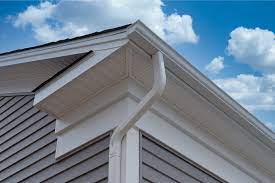When it comes to eaves construction, choosing the right roof is essential for both functionality and aesthetics. The roof not only protects your home from the elements but also contributes to the overall architectural style and curb appeal. With various roofing options available, it can be overwhelming to make the right choice. In this step-by-step guide, we will walk you through the process of selecting the appropriate roof for eaves construction. By considering factors such as materials, durability, style, and local climate, you can make an informed decision that meets your needs and enhances the beauty of your home.
Step 1: Assess Your Climate
Start by evaluating the climate in your area. Consider the average rainfall, snowfall, wind speeds, and temperature ranges throughout the year. Certain roofing materials perform better in specific climates. For example, metal roofs are highly durable and ideal for areas prone to high winds or heavy snowfall. In contrast, clay or concrete tiles are better suited for warmer climates with minimal snowfall. Understanding your local climate will help narrow down your options and ensure that the roof you choose can withstand the weather conditions in your region.
Step 2: Evaluate Roofing Materials
Research different roofing materials and understand their pros and cons. Common options include asphalt shingles, metal, clay or concrete tiles, wood shakes, and synthetic materials. Consider factors such as longevity, maintenance requirements, energy efficiency, and cost. Each material has its unique characteristics, appearance, and performance, so choose one that aligns with your preferences and budget.
Step 3: Consider Architectural Style
Take into account the architectural style of your home. Different roof styles complement specific architectural designs. For instance, gable roofs are versatile and work well with a variety of architectural styles, while hip roofs offer a more modern and streamlined appearance. Consider whether you want the roof to blend in seamlessly or make a bold statement. The roof should enhance the overall aesthetic appeal of your home and harmonize with its architectural character.
Step 4: Determine Roof Slope and Pitch
Evaluate the slope and pitch of your roof. The slope refers to the degree of incline, while the pitch measures the vertical rise of the roof per horizontal foot. Some roofing materials work better on steeper slopes, while others are more suitable for low-pitched roofs. For example, asphalt shingles are commonly used for roofs with a moderate pitch, while metal roofs are highly versatile and can accommodate various slopes. Understanding the slope and pitch of your roof will help you choose a material that is compatible and ensures proper water drainage.
Step 5: Consider Long-Term Durability
Take into account the longevity and durability of the roofing materials you are considering. Evaluate factors such as resistance to weathering, impact resistance, and fire resistance. Some materials, such as metal and clay tiles, are known for their durability and can last for several decades with minimal maintenance. Others, like wood shakes, may require more frequent maintenance and have a shorter lifespan. Consider the long-term durability of the roof to minimize future repairs and replacements.
Step 6: Budget and Cost Considerations
Determine your budget for the eaves construction project, including the cost of materials, installation, and any additional features. Keep in mind that different roofing materials vary in price, with some being more budget-friendly than others. Factor in the long-term cost of maintenance and repairs as well. While it’s essential to stay within your budget, also consider the value and benefits that a higher-quality and more durable roof can provide.
Conclusion:
Choosing the right roof for eaves construction requires careful consideration of climate, roofing materials, architectural style, slope, and budget. By assessing your climate, researching roofing materials, considering architectural style, evaluating roof slope and pitch, and prioritizing long-term durability, you can make an informed decision. Remember to consult with roofing professionals or contractors to gather additional insights and ensure proper installation. Selecting the right roof for eaves construction will not only provide protection but also enhance the overall aesthetics and value of your home. Take your time, weigh the options, and make a choice that suits your needs and preferences for a beautiful and functional eaves construction project.

